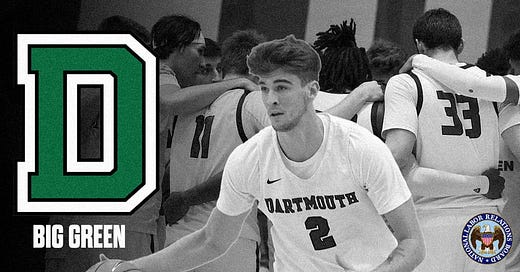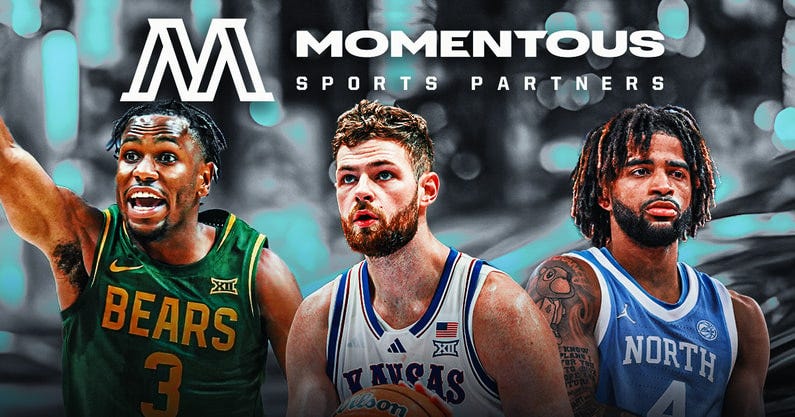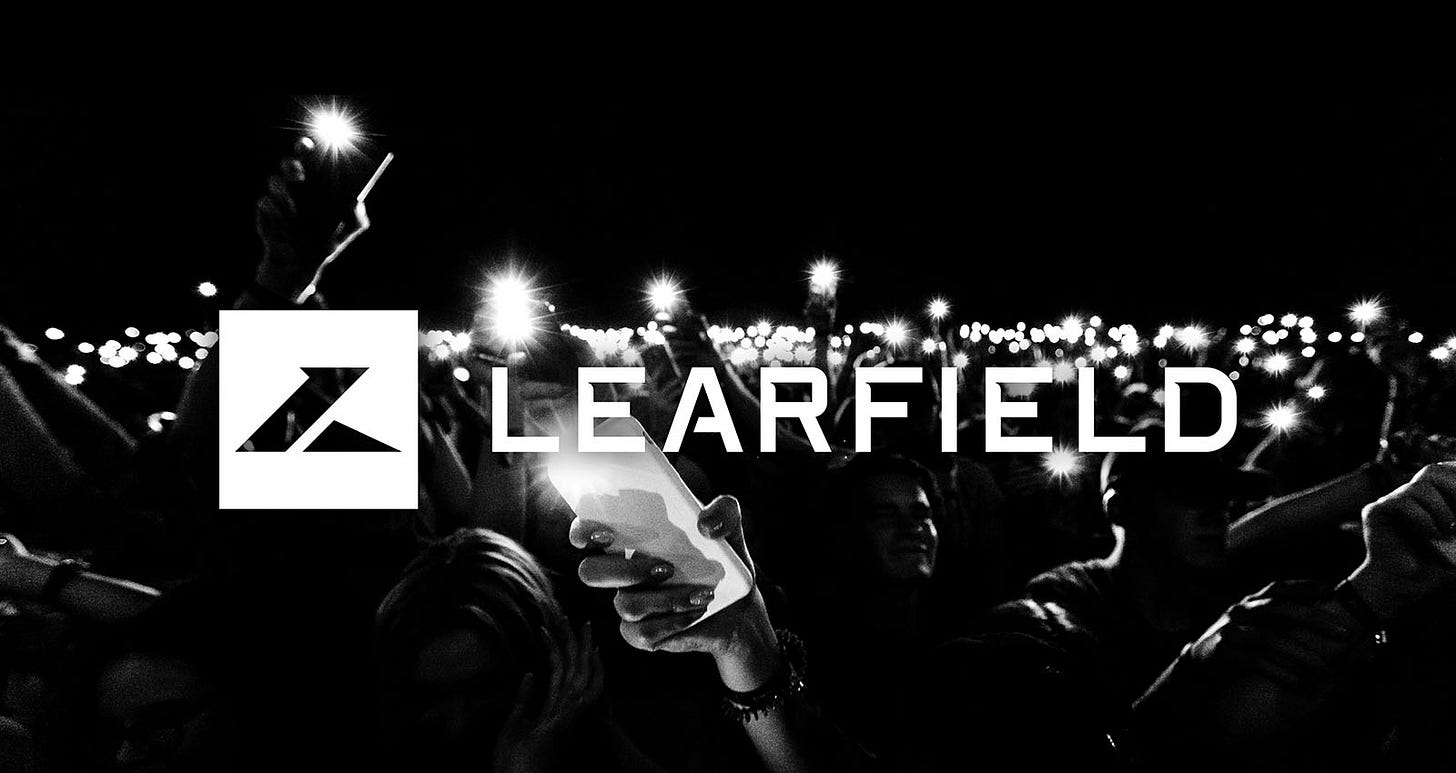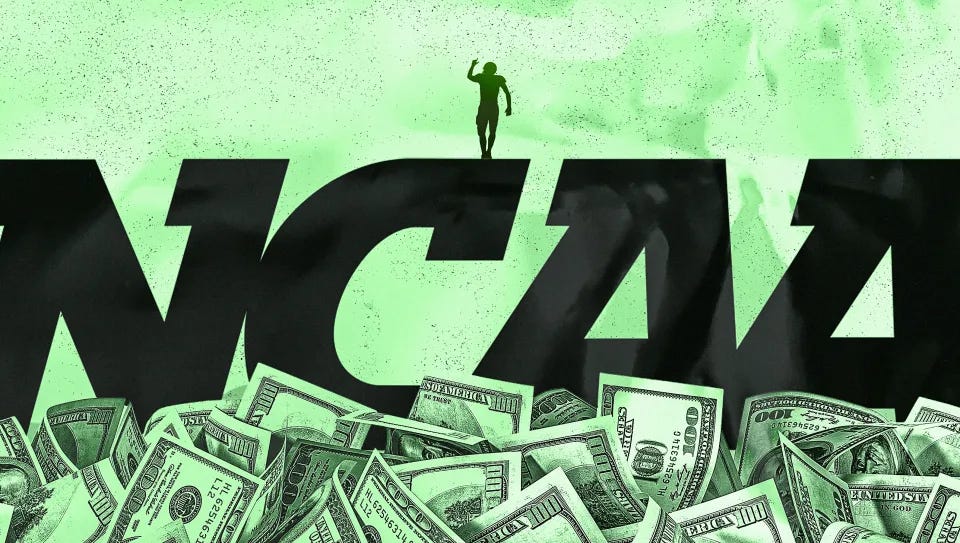Dartmouth's MCBB Team Withdraws Petition to Unionize, Momentous Sports Agency Launches College Basketball Division, + ICYMI | Newsletter #302
Today’s Thursday newsletter includes highlights from this week, important news from last week, and what to watch for.
Keep up to date on all of our newsletters and content by checking out past Optimum Sports Consulting Newsletters, and following us on Twitter!
Recapping Major News This Week:
Dartmouth Basketball Players are Reportedly Withdrawing Their Petition with the National Labor Relations Board to Unionize.
Dartmouth decided to unionize and be represented by Service Employees International Union Local 560 back in March. However, the union requested the withdrawal of its petition to the National Labor Relations Board seeking unionization for the team.
Michael McCann explains in his article for Sportico that “the union and the players, who were directly involved in this decision, faced two main areas of NLRB-related concerns which ultimately influenced their decision…. First, there is worry that President-elect Donald Trump will replace the current NLRB general counsel, Jennifer Abruzzo, with someone who is less likely to advocate for the recognition of college athletes as employees…. Second, the union and players understand that the agency’s five-person board is in flux and could become less favorable to Dartmouth athletes.”
While there is still a chance that Trump appoints individuals who are in favor of college athletes being considered employees - as he did when he appointed Supreme Court Justice Brett Kavanaugh during his first term - it is not certain that he will. As a result, the risk of losing their case, which would hinder other athletes from unionizing and seeking employment status, is greater.
CLICK HERE to learn more.
Momentous Sports Partners Launches New College Basketball NIL Agency
Momentous Sports Partners, founded by Joey Pennavaria and Daniel Hennes, has officially launched as a full-service agency with some of college basketball’s biggest stars. Headlined by players such as Kansas’ Hunter Dickinson, North Carolina’s R.J. Davis, Baylor’s Jeremy Roach and Auburn’s Johni Broome, Momentous is focusing on players who plan to play multiple years and develop at the collegiate level.
In an interview with On3, Joey Pennavaria stated that Momentous Sports Partners want to operate differently from some of the top Agency’s that primarily focus their attention on “one-and-done” athletes going from college to the NBA. “There’s so many more athletes now in college basketball that need representation because they’re professionals, as well, and can make really good money – life-changing money. They’re not NBA deals or NBA-sized deals, but there’s so many of these guys that need this help. That’s the white space that we saw.”
CLICK HERE to learn more.
Quick Hitter News:
Notre Dame’s independent status provides them a major financial boost with CFP money - LINK
Quarterback Sam Leavitt announces return to Arizona State alongside new deal with the school’s collective - LINK
Inside story on Grant House - the man behind House v. NCAA - LINK
North Dakota State continues dominant FCS run despite smaller budget - LINK
ICYMI
New Learfield Initiative Focused on Bringing Sponsorships to School Uniforms
Although jersey patches are still prohibited under NCAA rules, the multi-media rights giant, Learfield, is announcing an initiative, Performance Partner Alliance, to help deliver a jersey patch solution for its schools.
Despite the initiative, there are still multiple hurdles that need to be met before jersey latches can be added to school jerseys and uniforms. Jersey patches are not only, for now, against NCAA rules, but also many contracts with school apparel partners. Apparel partners such as Nike, Adidas and Under Armour, for example, have existing contracts with schools that prohibit other branding on jerseys and uniforms.
Nevertheless, Learfield is committed to providing a solution. “We’ve been at stagnation with arguably one of the most valuable aspects of college athletics — jersey patches,” Cole Gahagan, president and CEO of Learfield, told Yahoo Sports. “There is seemingly little to nothing anyone can do to actually get it moving. Activity has to start somewhere. We’ve got a responsibility to kick off that activity.”
If jersey patches do become legal, Learfield estimates that jersey patches could bring in anywhere from $500,000 annually for schools, to as much as $12 million for the top power conference programs.
CLICK HERE to learn more.
What To Watch For: Revenue-Sharing Era Impact
The NIL era changed the collegiate landscape forever. Athletes became empowered with the ability to not only profit off their own name, image, and likeness, but also the ability to leverage their new empowerment into more advantageous opportunities. For example, they had the ability to utilize transferring schools as an opportunity maximize their earnings and/or leverage the threat of transferring for more money. Through various state laws, lawsuits, and NCAA rule changes, college sports changed dramatically during the NIL era. How will things change during the revenue-sharing era?
Under the new revenue-sharing system, universities are permitted to use direct school funds in a more regulated structure that features a compensation (salary) cap and NCAA group that enforces the new rules surrounding payments from schools and their NIL collective arms. In particular, schools will be able to distribute at least $20.5 million to their athletes starting next school year and can expand scholarships to entire rosters. However, how will they distribute this money throughout their sports programs?
In a sitdown with Yahoo Sports, the Ohio State school president and athletic director detailed their plan stating that Ohio State will offer 91 new scholarships (58 to women for Title IX purposes) at an additional cost of $4.5 million, and plan to tier their sports based on their revenue generation. Football, being at the top of the tiered system, will have the most significant distribution of revenue to athletes.
In addition, Ohio State plans to distribute their $20.5 million pool in two ways. They plan to distribute it “‘proportionally’ based on male-female split and a ‘market-based approach’ determined through valid market factors such as a sport’s television viewership, social media impressions, etc. Though Bjork [Ohio State’s Athletic Director] declined to reveal specific percentages by sport, many of the football-generating giants of FBS plan to disburse the vast majority of their revenue, as much as or more than 90%, to football and men’s basketball — the only two profit-turning sports at many universities.”
While this is the plan for only one University, it highlights the major decisions that are going to come from schools across the country as we get closer to the 2025-26 academic year.
Check out Ross Dellenger’s article for Yahoo Sports HERE to learn more.
Thanks for Reading!
Keep up to date on all of our newsletters and content by checking out past Optimum Sports Consulting Newsletters, and following us on Twitter!









